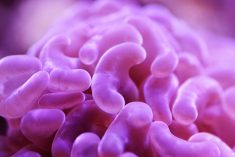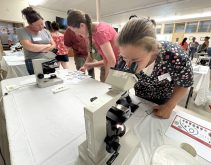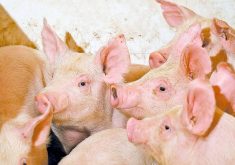To combat the pain associated with horn bud removal, University of Guelph researchers are examining methods that will make calves more comfortable.
University of Guelph Professor Charlotte Winder and PhD candidate Cassandra Reedman, from the Department of Population Medicine, have found that administering local anesthesia with non-steroidal anti-inflammatory drug (NSAID) pain relievers is the most beneficial combination to reduce pain caused by caustic paste disbudding in young calves.
Why it matters: Disbudding in young calves is a necessary practice but it can compromise welfare.
Read Also

Jennifer Hayes appointed for second term as the Chairperson of the Canadian Dairy Commission
Jennifer Hayes has been re-appointed as Chairperson of the Canadian Dairy Commission by Heath MacDonald, Minister of Agriculture and Agri-Food.
“Horn removal is a common procedure on dairy farms,” says Winder. “It reduces the risk of injury associated with horns to other cattle or the farm staff.”
[READ MORE] Setting dairy calves up for success
Disbudding calves at an early age can minimize the health risks and stress associated with the procedure. When a calf is very young, disbudding can be done either by caustic paste (chemical burn) or cautery (thermal burn), to destroy the horn-producing cells of horn buds to prevent growth.
Little research has explored best pain control practices for caustic paste disbudding for young calves. Disbudding can be unpleasant and stressful for the calf without pain-reducing methods to manage discomfort. One of the ways that researchers can measure acute stress is through levels of serum cortisol, a stress hormone. Winder and Reedman compared calves disbudded without pain control, with just local anesthetic (lidocaine), with just an NSAID (meloxicam), and with both medications given together. They also had a control group which was not disbudded.
They found that using either lidocaine or meloxicam alone wasn’t as effective at reducing serum cortisol levels, compared to when they were used together. The combination of lidocaine and meloxicam greatly reduced serum cortisol levels in comparison to no pain control.
The researchers then looked at whether using a sedative in addition to a local anesthetic and NSAID could further reduce behavioural indicators of pain in calves during disbudding. The researchers studied two groups of calves at the Ontario Dairy Research Centre in Elora, Ont. Reedman sedated one group of calves with xylazine and left the other group untreated. Both groups received lidocaine nerve blocks and the NSAID meloxicam. Disbudding was done with a cautery iron for both groups.
After the procedure, the sedated calves showed more play behaviours and were less sensitive than their non-sedated counterparts.
However, some results examining milk drinking behaviour suggested that the sedative had a hangover effect lasting up to 48 hours following the procedure. More research is needed to determine if the positive benefits of sedation outweigh the possible negative consequences in feeding behaviour. Discretion over xylazine use should be left up to the farmer in consultation with their veterinary practitioner.
“Since disbudding is essential to safety in dairy cattle management, our research has pointed out a need for further work to be done to optimize calf welfare when disbudding with a cautery iron,” says Reedman.
– Mya Kidson and Kathryn Kroeze are student writers with Students Promoting Awareness of Research Knowledge (SPARK) at the University of Guelph.












